Quick Summary:
Can granite countertop be painted?
Table of Contents
Toggle- Can granite countertop be painted?
- What does “painting granite” really mean?
- Who should (and shouldn’t) paint granite countertops
- What paint works on granite: products & chemistry
- Step-by-step: how to paint granite countertops (professional-grade workflow)
- DIY kits vs professional epoxy/polyurea services — pros & cons
- Longevity, common problems & real-world results (before & after)
- Costs and budgeting (kits vs pro refinishing vs replacement)
- Regulations & industry trends that affect countertop coatings
- Long-tail keywords (3–5 with buying/manufacturer intent)
- FAQ — Google hot-search style (5 Q&A)
- Semantic Closed-Loop — How / Why / What / Options / Considerations
Painting granite countertops is possible and a popular DIY alternative to full replacement. Success depends on preparation (cleaning + abrasion or etching), using the right system (high-adhesion primer + specialty countertop epoxy or acrylic topcoat), and correct curing. Kits such as Giani and established coatings (two-part epoxies or specially formulated countertop coatings) make good results achievable in a weekend; however, longevity varies — epoxy topcoats are tougher but can yellow over the long term, acrylic systems cure more slowly but are lower VOC. Regulatory trends (tighter VOC limits and preference for low-VOC, water-based formulas) are pushing manufacturers toward safer, better-performing countertop kits. If durability, warranty, or resale value matters, factory/fabricator replacement or professional epoxy resurfacing is usually preferable.
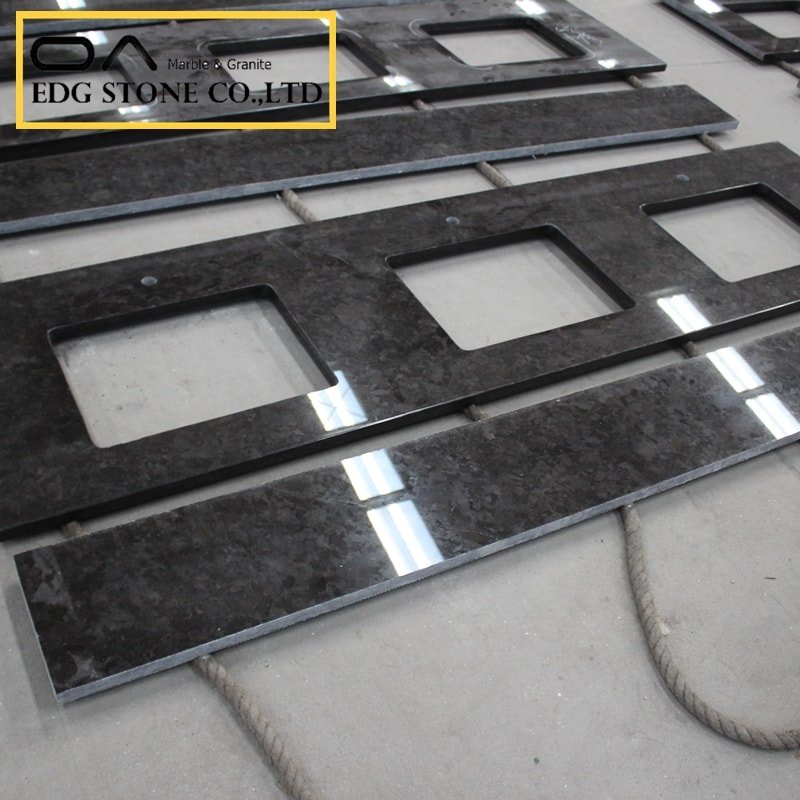
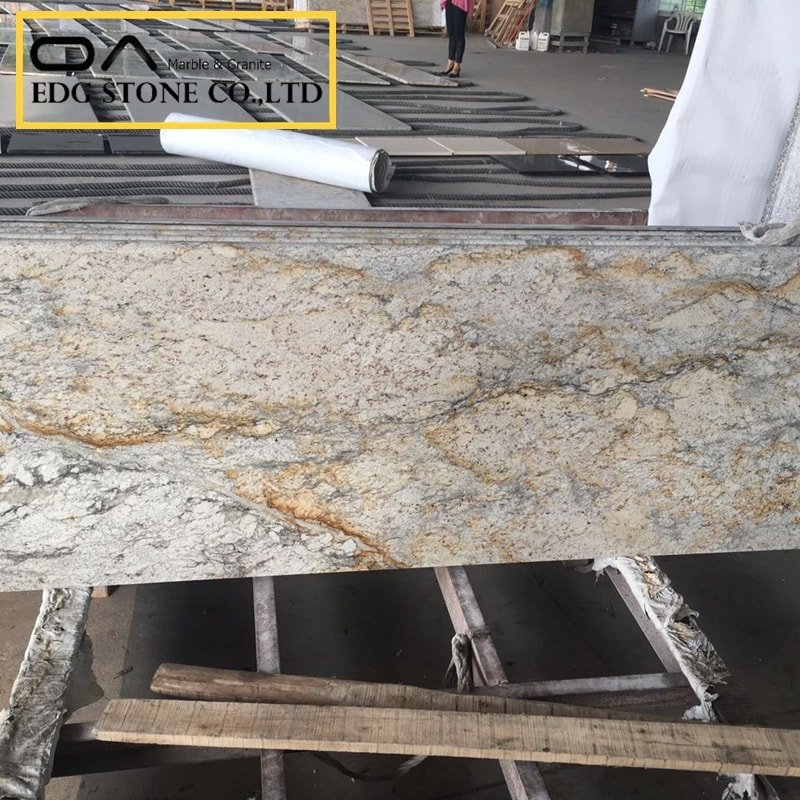
What does “painting granite” really mean?
When homeowners talk about “painting granite,” they usually mean one of three things:
Applying a decorative paint kit to create a faux-granite or marble look (common DIY kits).
Applying a specialty epoxy/polyurethane/polyurea coating to resurface and protect the stone surface.
Painting with standard house paint (not recommended — poor adhesion and durability).
True success requires surface prep and a topcoat system formulated for high-traffic horizontal surfaces. Off-the-shelf interior latex will not hold up unless the surface is properly prepared and a durable topcoat is applied.
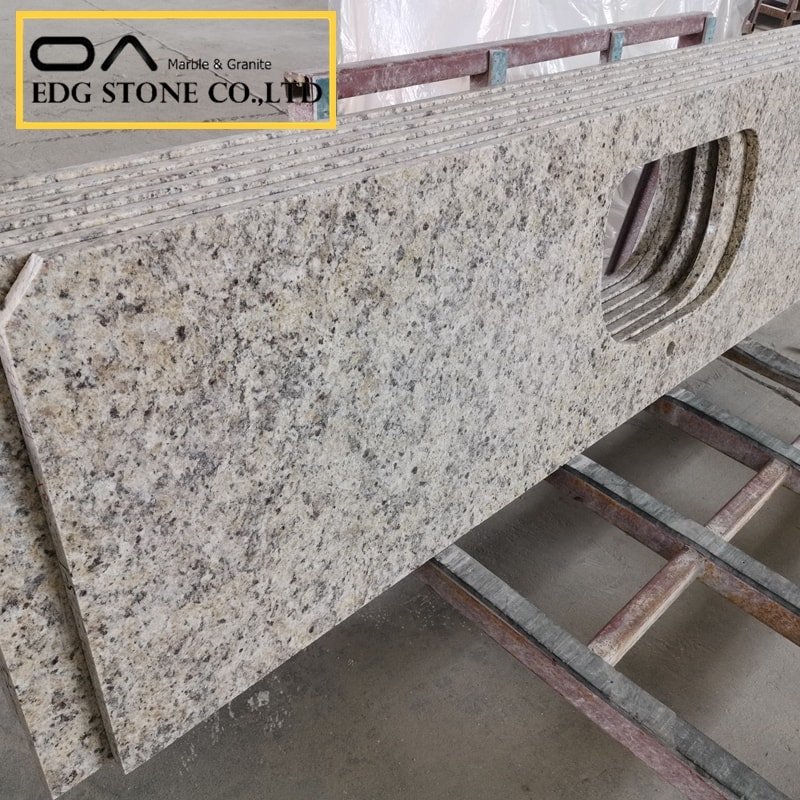
Who should (and shouldn’t) paint granite countertops
Good candidates:
Renters or homeowners who want a budget refresh and accept that paint may be a medium-term solution.
Kitchens with unattractive granite that the owner plans to replace in a few years and wants an inexpensive interim look.
Low-use counters (secondary prep areas, laundry, bathrooms) where heavy abuse is unlikely.
Not ideal:
High-use primary kitchen islands where heavy pots, knives, and daily food prep happen (unless you choose professional-grade epoxy/professional installation).
Owners planning to sell soon in higher-end markets — painted granite can sometimes affect perceived value.
Those unwilling to follow careful prep/curing instructions — improper prep is the leading cause of failure.
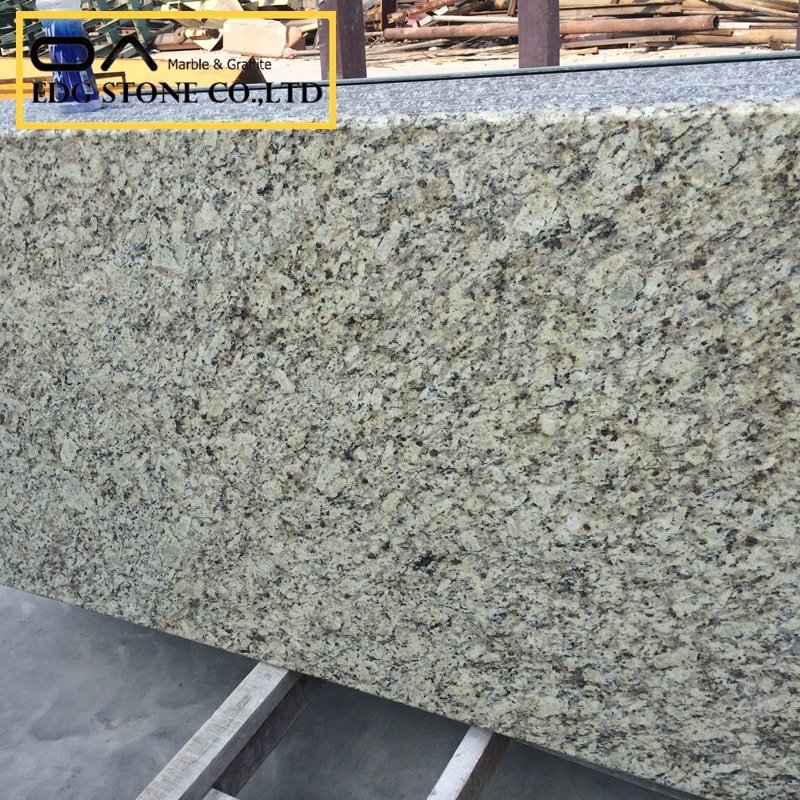
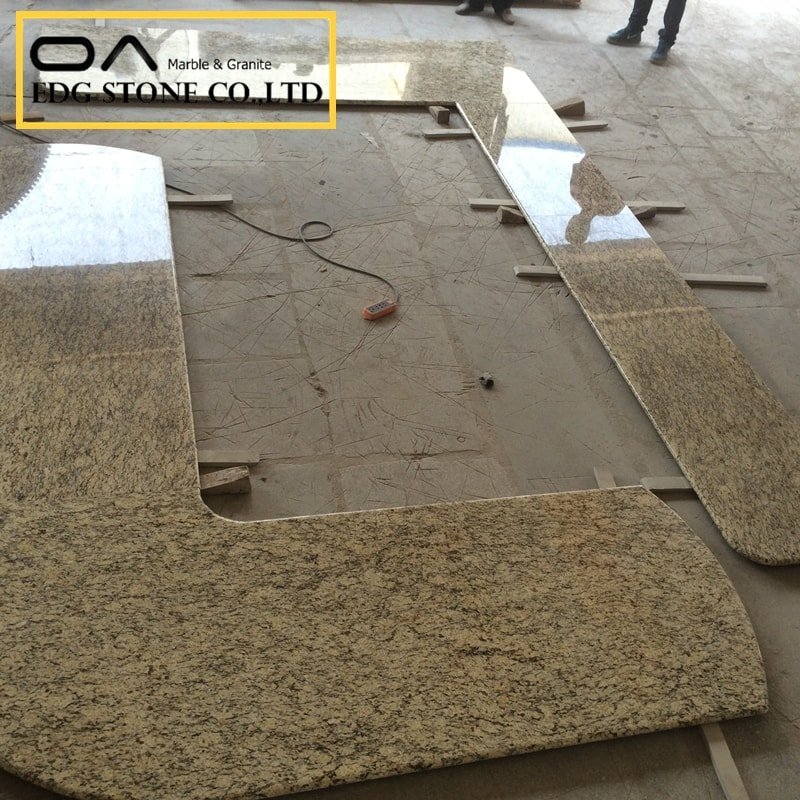
What paint works on granite: products & chemistry
Three main coating approaches succeed when done correctly:
Two-part epoxy topcoats — chemically cure, form a very hard, abrasion-resistant surface, shorter cure times. Widely used by kits that include epoxy topcoat options; stronger, but some epoxies can yellow over many years if UV or inferior resins are used.
Acrylic-based countertop kits — water-based, lower VOC options (some manufacturers call these 100% acrylic). Easier to work with, take longer to reach full hardness, but modern formulas can be surprisingly durable; many kits now offer acrylic topcoats as a lower-VOC option.
Specialty multi-component coatings (polyurea/polyurethane blends) — professional systems applied by contractors; these offer excellent abrasion and heat resistance but usually require a pro applicator.
Well-known consumer kits and brands: Giani (Countertop Paint Kits, acrylic & epoxy options), Rust-Oleum countertop coatings/kits, and multiple epoxy countertop systems and professional installers. Home Depot, Amazon, and specialty suppliers stock these.
Key adhesion step: granite must be thoroughly cleaned, degreased, and lightly abraded or chemically etched so primer and topcoat can bond. A high-adhesion primer or an adhesion-promoting step is usually included in kit instructions. Failure to prep is the most common cause of delamination.
Step-by-step: how to paint granite countertops (professional-grade workflow)
This is the high-level workflow pros or careful DIYers follow.
Clear & protect: remove everything, protect cabinets/floors, ventilate the area.
Deep clean & degrease: use a heavy-duty kitchen degreaser and rinse fully. Oils block adhesion.
Abrade or etch the surface: lightly sand (120–220 grit) or use manufacturer-recommended etching solution to create a mechanical bite. Always follow the kit instructions.
Repair chips or grout lines before painting — fill with compatible epoxy filler and sand smooth.
Prime with a high-adhesion primer (if kit requires). Some kits include a primer/base coat.
Apply mineral color/base coats — for granite-look, kits use multiple thin layers with sponges/splats for texture.
Add detail/veining (optional) — use feathering brushes or glaze techniques for marble-like veins.
Topcoat (epoxy or acrylic) — self-leveling epoxy or acrylic topcoat is applied per manufacturer directions; epoxy often requires pouring and spreading, acrylics are rolled/rolled and troweled. Allow full cure times (varies: acrylics 7–14+ days for full hardness; epoxy often 7 days).
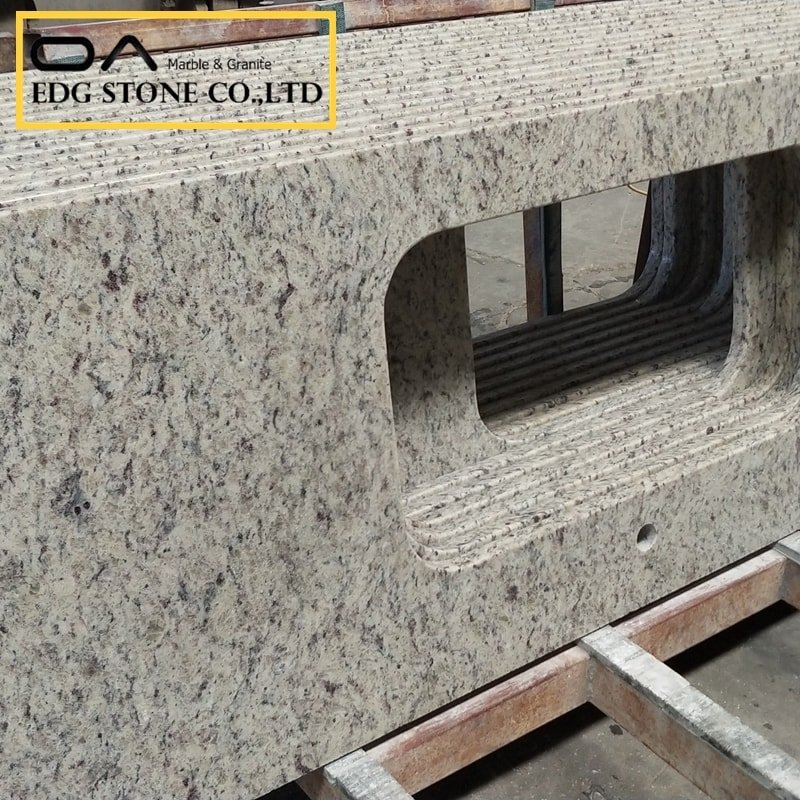
DIY kits vs professional epoxy/polyurea services — pros & cons
DIY kits (Giani, Rust-Oleum, generic “countertop paint kits”)
Pros: low cost (often $60–$200 per kit), fast (weekend project), large variety of looks. Great for budget refresh. 亞馬遜+1
Cons: technique-sensitive; risk of visible seams, lap marks, uneven texture; durability varies; some users report yellowing or wear after several years.
Professional resurfacing (epoxy/polyurea applied by contractor)
Pros: best durability, warranty options, professional finish, suitable for heavy-use kitchens.
Cons: more expensive (labor + materials), requires scheduling and contractor access; some professional epoxies can still yellow if not UV-stable.
Replacement (new slab)
Pros: longest-lasting, resale-friendly, and many material choices.
Cons: most expensive option; lead times; seams and installation cost.
Choose based on desired lifespan, use intensity, and budget. If you want the look but expect heavy use, prefer pro resurfacing or replacement.
Longevity, common problems & real-world results (before & after)
What lasts: Two-part epoxies and professional polyurea systems typically provide the best abrasion resistance. Manufacturer-cured epoxy topcoats are regularly used in commercial and residential resurfacing projects.
What fails: Poor prep causes peeling; cheaper epoxies or UV exposure may yellow (documented user reports and long-term forum threads). Many DIYers share striking before/after photos but mixed long-term maintenance stories. Test small areas and follow curing windows.
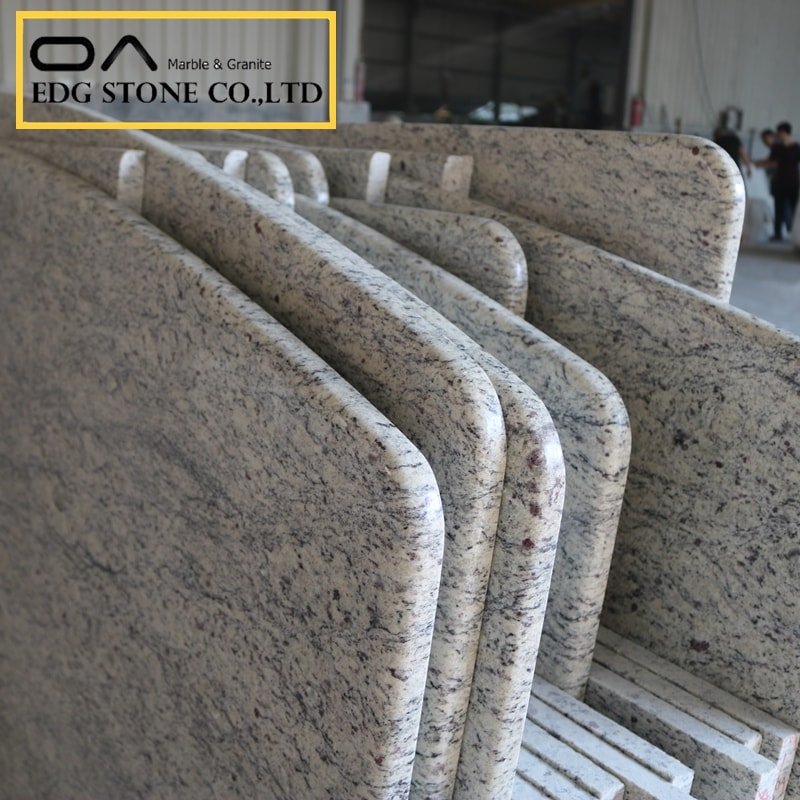
Costs and budgeting (kits vs pro refinishing vs replacement)
DIY countertop kit (Giani, Rust-Oleum): approximately $50–$200, depending on kit and size. Good for basic to moderate counters. 亞馬遜+1
Professional epoxy/polyurea resurfacing: labor + materials often run $500–$2,500,+ depending on square footage, edge complexity, and region.
Full granite replacement: widely variable depending on slab grade and labor — typically $2,000–$8,000+ for a standard kitchen, depending on region and slab quality. (If replacement is in the plan, compare quotes.)
Regulations & industry trends that affect countertop coatings
Two regulatory/market shifts are relevant:
VOC regulation & low-VOC formulations: State and regional air quality boards (e.g., California Air Resources Board) set VOC limits for architectural coatings. Manufacturers have responded with lower-VOC, water-based acrylic topcoats and reformulated kits to meet rules and consumer health expectations. Choose certified low-VOC products when indoor air quality matters.
Move to professional-grade, safer chemistries: As consumers expect better durability, many manufacturers emphasize 2-part epoxy options with improved UV stability or alternative clear coats (polyurea) that resist yellowing. This shift also raises the profile of professional resurfacing services.
Takeaway: pick low-VOC or water-based options when possible, ventilate during application, and follow disposal/handling rules — local rules may limit certain solvents or require labeling and handling procedures.
Long-tail keywords (3–5 with buying/manufacturer intent)
best countertop paint kit wholesale manufacturer
commercial granite countertop paint service factory certified
granite countertop paint kit bulk supply manufacturer factory
can granite countertop be painted by contractor near me professional service
buy granite countertop epoxy kit manufacturer wholesale
50 SEO tags:
can granite countertop be painted,paint granite countertops,what paint to use on granite countertops,can granite be painted over,can granite tops be painted,how do you paint granite countertops,can a granite countertop be painted,can you paint granite kitchen countertops,before and after paint granite,pros and cons painting granite countertops,best paint to use on granite,granite countertop paint kit,granite paint kit Giani,Rust-Oleum countertop kit,how to paint granite countertops white,granite countertop refinishing,epoxy countertop granite,acrylic countertop kit,DIY granite painting,professional countertop resurfacing,polyurea countertop granite,granite countertop repair and paint,granite paint kit wholesale,manufacturer granite paint kit,factory countertop paint service,bulk granite countertop paint,where to buy countertop paint kit,granite paint durability,granite paint yellowing,low VOC countertop paint,eco friendly countertop paint,granite countertop sealing before paint,granite countertop primer,how long to cure countertop paint,granite paint before after photos,granite paint reviews,granite paint costs,granite countertop replacement vs paint,granite paint maintenance,granite epoxy coating,granite marble look paint,painted granite resale value,granite countertop refinisher near me,how to prep granite for paint,granite topcoat epoxy,commercial granite coatings,granite counter paint kit amazon,granite countertop painting companies,granite countertop restoration paint.
FAQ — Google hot-search style (5 Q&A)
Below are five high-search Q&A. These exact Q&A strings are repeated verbatim in the JSON-LD block that follows this section.
Q1: What paint to use on granite countertops?
A1: Use a system made for countertops — either a two-part epoxy topcoat or a specialty acrylic countertop kit included in consumer kits (Giani, Rust-Oleum). The key is adhesion primer + durable topcoat.
Q2: Can granite be painted over?
A2: Yes, if you properly clean, degrease, and abrade or etch the surface, then apply a high-adhesion primer and a durable countertop topcoat. Poor preparation is the main reason paint fails.
Q3: How do you paint granite countertops white?
A3: Clean and sand/etch granite, apply primer and a white base coat (many kits provide white or “marble” bases), add veining if desired, then finish with epoxy or acrylic topcoats per kit instructions and allow full cure.
Q4: Pros and cons of painting granite countertops?
A4: Pros — low cost, fast aesthetic update, many looks available. Cons: variable durability, possible yellowing, may affect resale, requires careful prep and cure. Professional resurfacing reduces many cons.
Q5: Companies that paint granite countertops — should I hire one?
A5: Professional resurfacing companies or countertop fabricators using epoxy/polyurea offer better durability and a warranty. Hire a pro for high-use kitchens or when you want long-term performance. Get references and ask about UV stability and VOC compliance.
Semantic Closed-Loop — How / Why / What / Options / Considerations
How: Painting granite is a two-part problem: adhesion and protection. Create adhesion by degreasing + abrasion/etching and use a high-adhesion primer. Protect with an epoxy or acrylic topcoat designed for countertops.
Why: Granite is durable but color-limited and sometimes out of style; painting provides cost-efficient visual transformation without demolition. However, painted surfaces must balance appearance and performance.
What: Options range from inexpensive Giani/Rust-Oleum-style kits (best for low-cost transformations) to professional polyurea/epoxy resurfacing (best for long-term durability). Each option carries trade-offs: cost vs life span vs impact on resale.
Options (detailed): DIY acrylic kit (weekend, $50–$200); DIY epoxy kit (more durable, skill-sensitive); Professional resurfacing (longer-lasting, $500+); Full slab replacement (highest cost, longest life, best resale).
Considerations (detailed): – Durability vs. aesthetics: If heavy use is expected, choose professional epoxy/polyurea or consider replacement. – Health & compliance: Choose low-VOC options when possible; ventilate during application (CARB and local rules may affect product choice). – Long-term maintenance: Avoid abrasive cleaners and hot pans directly on the painted surface; follow the manufacturer’s care instructions. – Resale & ROI: Painted counters can deter some buyers — assess local market expectations before painting a permanent feature.
